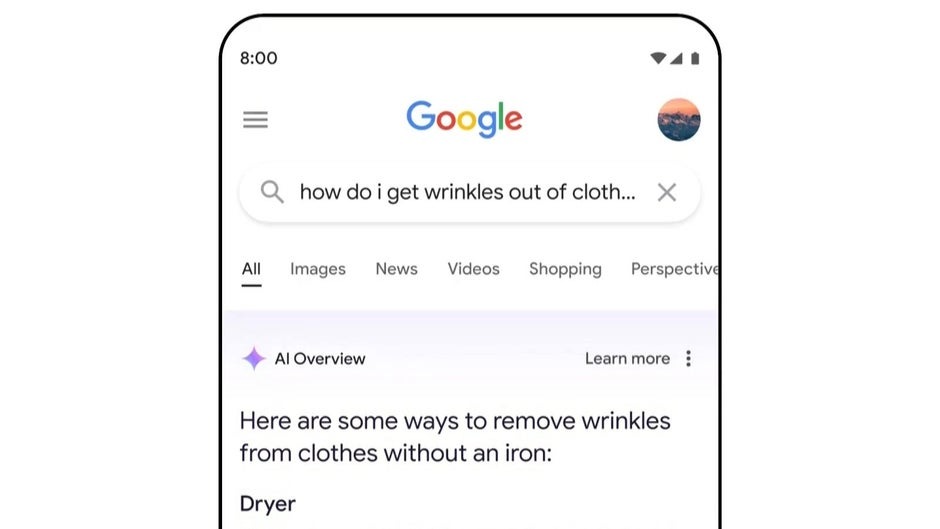Google is reportedly experimenting with a new visual feature designed to elevate the user experience within its AI-driven platforms. This Gemini-style animation is being tested as an enhancement for loading pages tied to AI overviews, aiming to create a smoother and more engaging interface. Such developments reflect Google’s ongoing efforts to refine the presentation of artificial intelligence across its services, reinforcing its leadership in technology innovation while responding to user demands for more dynamic interactions.

The Gemini initiative, central to Google’s AI evolution, represents the convergence of advanced generative AI capabilities with an optimized user interface. By incorporating this animation, Google seeks to reduce perceived waiting times and enhance engagement during AI query processing. The animation, with its sleek transitions and visually appealing elements, could provide users with a sense of progress while the system generates responses. Although details remain sparse, early reports suggest that the new design prioritizes both aesthetics and functionality.
You might notice how loading times can feel like a gap in your interaction, particularly when dealing with AI-powered systems that require significant computational work to produce responses. Google’s Gemini-style animation addresses this issue by replacing static loading indicators with dynamic, visually stimulating content. The approach reflects Google’s broader strategy of using design to create seamless experiences that keep users engaged. This type of innovation showcases the company’s ability to combine technical precision with user-centric design.
To understand the significance of this development, it is essential to consider the broader context of AI integration in Google’s services. The company’s ongoing advancements in generative AI have brought sophisticated features to platforms like Google Search, Workspace, and cloud-based tools. These services rely on complex AI models capable of processing vast amounts of data to deliver tailored results. While functionality has been a key focus, the user interface is increasingly being recognized as an equally critical factor. Enhancements like the Gemini-style animation aim to bridge the gap between technical complexity and user accessibility.
For users interacting with Google’s AI services, the introduction of Gemini-style animations could mark a noticeable improvement in how these systems communicate progress. Animations provide a visual cue that the system is actively working, which can be particularly reassuring when dealing with intricate queries. This feature aligns with Google’s emphasis on maintaining transparency and trust in its AI tools, ensuring that users understand the processes at work behind the scenes. Additionally, the animations may serve as an educational tool, subtly reinforcing the concept of AI’s step-by-step functionality.
While the primary goal of the animation is to enhance user experience, it also serves a branding purpose. Google’s focus on innovative design has long been a hallmark of its identity, and features like this reinforce its position as a leader in the tech industry. The visual language of the Gemini-style animation could become synonymous with Google’s AI offerings, much like how certain design elements are associated with iconic products. This move underscores the role of design in shaping not just user perception but also corporate identity.
The technical aspects of implementing such an animation are equally noteworthy. Google’s AI models, including those under the Gemini initiative, are built on large-scale neural networks capable of generating high-quality responses across various domains. Integrating animations within this framework requires significant collaboration between engineers and designers, ensuring that the visual elements do not compromise system performance. This balance between functionality and aesthetics demonstrates Google’s commitment to delivering well-rounded solutions.
If you are someone who regularly uses Google’s AI-driven tools, you might find the new animation to be a welcome addition. Beyond the visual appeal, it reflects a broader trend of making AI interactions more human-centric. By prioritizing design elements that resonate with users, Google is effectively narrowing the gap between advanced technology and everyday usability. This focus is particularly important as AI becomes more integrated into routine tasks, from drafting emails to conducting in-depth research.
The introduction of this animation could also set a precedent for other tech companies exploring ways to enhance their AI interfaces. As competition intensifies in the AI space, features that improve user engagement and satisfaction are likely to become key differentiators. Google’s move to test and potentially implement the Gemini-style animation positions it ahead of competitors in terms of both functionality and user experience. For users, this means a continuous stream of improvements that make AI tools more intuitive and enjoyable to use.
As the testing phase progresses, it will be interesting to see how users respond to the animation and whether it becomes a standard feature across Google’s AI platforms. Feedback from these tests will likely shape the final implementation, with adjustments made based on user preferences and technical performance. The iterative nature of such developments reflects Google’s approach to innovation, where user input plays a critical role in refining products and services.
Although specific launch timelines for the Gemini-style animation have not been disclosed, its development highlights Google’s broader vision for AI integration. By focusing on both the technical and experiential aspects of its tools, Google is setting the stage for a new era of AI-driven interactions. Whether you are a casual user or a professional relying on these tools for work, these advancements are poised to redefine how you engage with AI.
Google’s testing of Gemini-style animations for AI overview loading pages represents a significant step forward in the evolution of user-centric design. By addressing both the practical and emotional aspects of AI interactions, this feature exemplifies the company’s commitment to innovation and excellence. As these animations make their way into everyday use, they are likely to become a defining element of Google’s AI identity, reshaping expectations for what AI-powered tools can achieve.










Add Comment